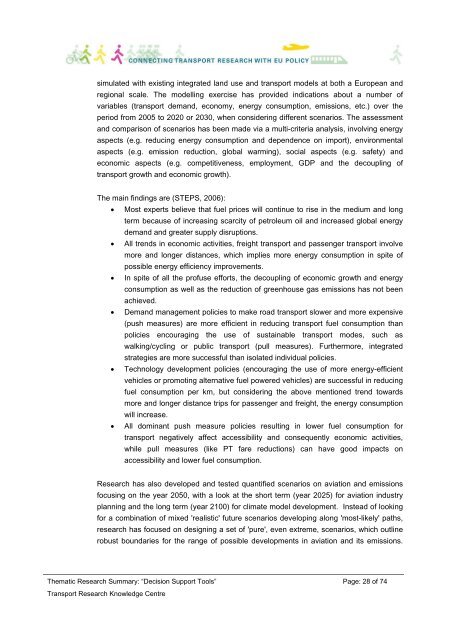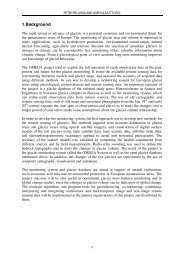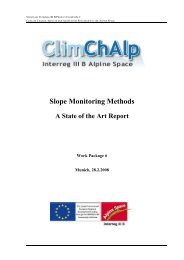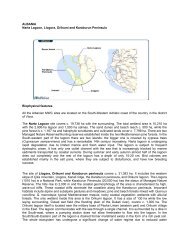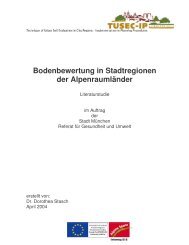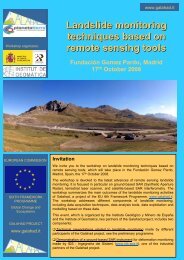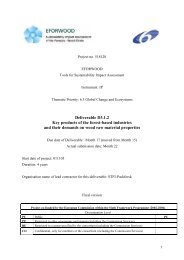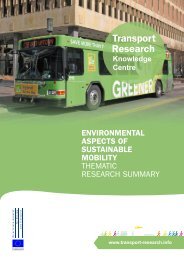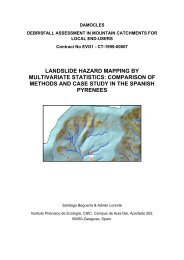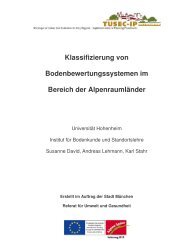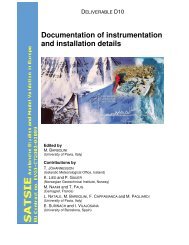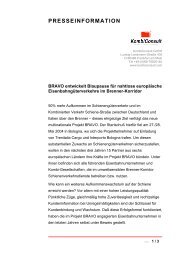Decision Support Tools - Thematic Research Summary - Transport ...
Decision Support Tools - Thematic Research Summary - Transport ...
Decision Support Tools - Thematic Research Summary - Transport ...
You also want an ePaper? Increase the reach of your titles
YUMPU automatically turns print PDFs into web optimized ePapers that Google loves.
simulated with existing integrated land use and transport models at both a European andregional scale. The modelling exercise has provided indications about a number ofvariables (transport demand, economy, energy consumption, emissions, etc.) over theperiod from 2005 to 2020 or 2030, when considering different scenarios. The assessmentand comparison of scenarios has been made via a multi-criteria analysis, involving energyaspects (e.g. reducing energy consumption and dependence on import), environmentalaspects (e.g. emission reduction, global warming), social aspects (e.g. safety) andeconomic aspects (e.g. competitiveness, employment, GDP and the decoupling oftransport growth and economic growth).The main findings are (STEPS, 2006):• Most experts believe that fuel prices will continue to rise in the medium and longterm because of increasing scarcity of petroleum oil and increased global energydemand and greater supply disruptions.• All trends in economic activities, freight transport and passenger transport involvemore and longer distances, which implies more energy consumption in spite ofpossible energy efficiency improvements.• In spite of all the profuse efforts, the decoupling of economic growth and energyconsumption as well as the reduction of greenhouse gas emissions has not beenachieved.• Demand management policies to make road transport slower and more expensive(push measures) are more efficient in reducing transport fuel consumption thanpolicies encouraging the use of sustainable transport modes, such aswalking/cycling or public transport (pull measures). Furthermore, integratedstrategies are more successful than isolated individual policies.• Technology development policies (encouraging the use of more energy-efficientvehicles or promoting alternative fuel powered vehicles) are successful in reducingfuel consumption per km, but considering the above mentioned trend towardsmore and longer distance trips for passenger and freight, the energy consumptionwill increase.• All dominant push measure policies resulting in lower fuel consumption fortransport negatively affect accessibility and consequently economic activities,while pull measures (like PT fare reductions) can have good impacts onaccessibility and lower fuel consumption.<strong>Research</strong> has also developed and tested quantified scenarios on aviation and emissionsfocusing on the year 2050, with a look at the short term (year 2025) for aviation industryplanning and the long term (year 2100) for climate model development. Instead of lookingfor a combination of mixed 'realistic' future scenarios developing along 'most-likely' paths,research has focused on designing a set of 'pure', even extreme, scenarios, which outlinerobust boundaries for the range of possible developments in aviation and its emissions.<strong>Thematic</strong> <strong>Research</strong> <strong>Summary</strong>: “<strong>Decision</strong> <strong>Support</strong> <strong>Tools</strong>” Page: 28 of 74<strong>Transport</strong> <strong>Research</strong> Knowledge Centre


